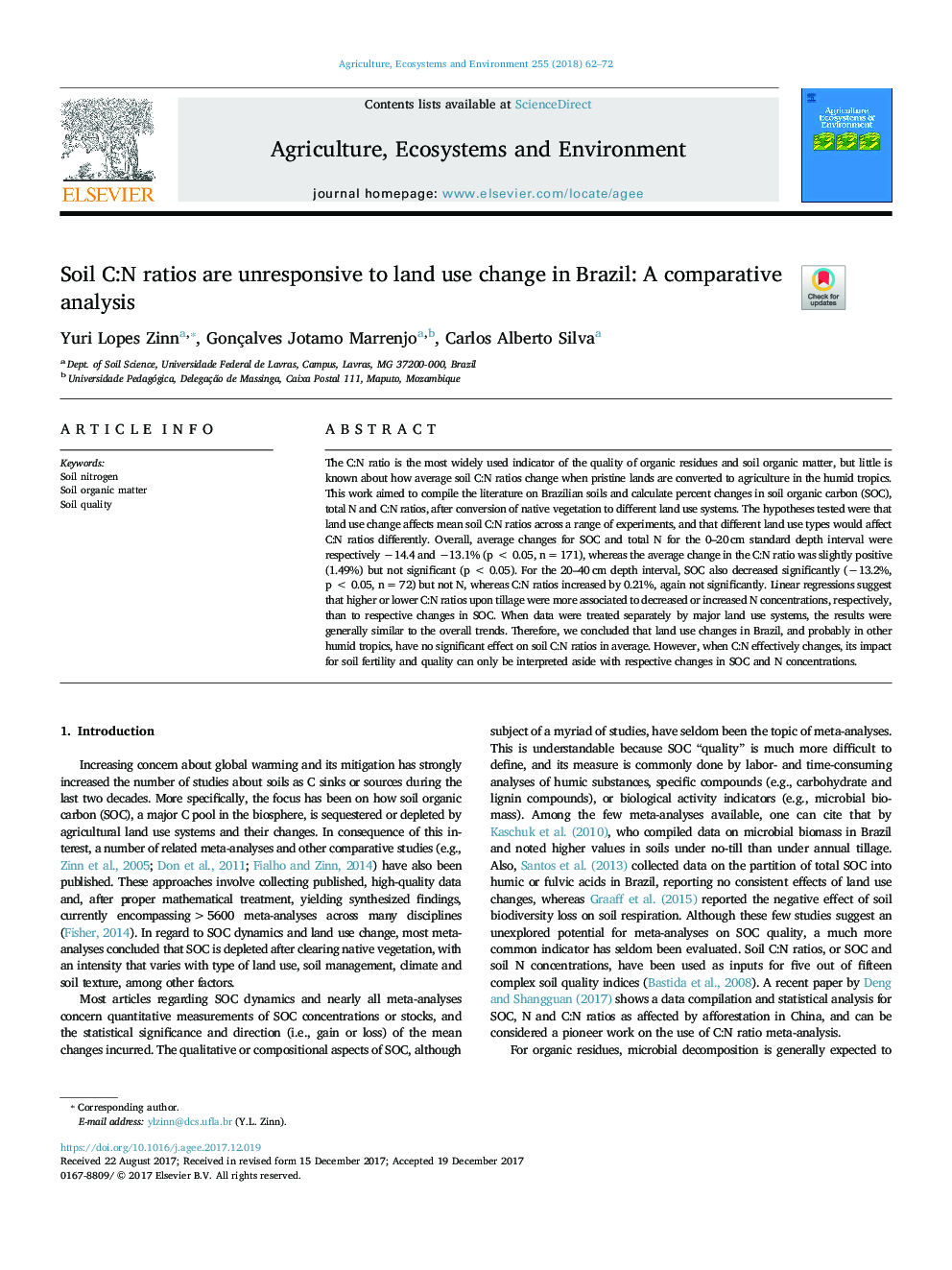| Article ID | Journal | Published Year | Pages | File Type |
|---|---|---|---|---|
| 8487187 | Agriculture, Ecosystems & Environment | 2018 | 11 Pages |
Abstract
The C:N ratio is the most widely used indicator of the quality of organic residues and soil organic matter, but little is known about how average soil C:N ratios change when pristine lands are converted to agriculture in the humid tropics. This work aimed to compile the literature on Brazilian soils and calculate percent changes in soil organic carbon (SOC), total N and C:N ratios, after conversion of native vegetation to different land use systems. The hypotheses tested were that land use change affects mean soil C:N ratios across a range of experiments, and that different land use types would affect C:N ratios differently. Overall, average changes for SOC and total N for the 0-20â¯cm standard depth interval were respectively â14.4 and â13.1% (pâ¯<â¯0.05, nâ¯=â¯171), whereas the average change in the C:N ratio was slightly positive (1.49%) but not significant (pâ¯<â¯0.05). For the 20-40â¯cm depth interval, SOC also decreased significantly (â13.2%, pâ¯<â¯0.05, nâ¯=â¯72) but not N, whereas C:N ratios increased by 0.21%, again not significantly. Linear regressions suggest that higher or lower C:N ratios upon tillage were more associated to decreased or increased N concentrations, respectively, than to respective changes in SOC. When data were treated separately by major land use systems, the results were generally similar to the overall trends. Therefore, we concluded that land use changes in Brazil, and probably in other humid tropics, have no significant effect on soil C:N ratios in average. However, when C:N effectively changes, its impact for soil fertility and quality can only be interpreted aside with respective changes in SOC and N concentrations.
Related Topics
Life Sciences
Agricultural and Biological Sciences
Agronomy and Crop Science
Authors
Yuri Lopes Zinn, Gonçalves Jotamo Marrenjo, Carlos Alberto Silva,
